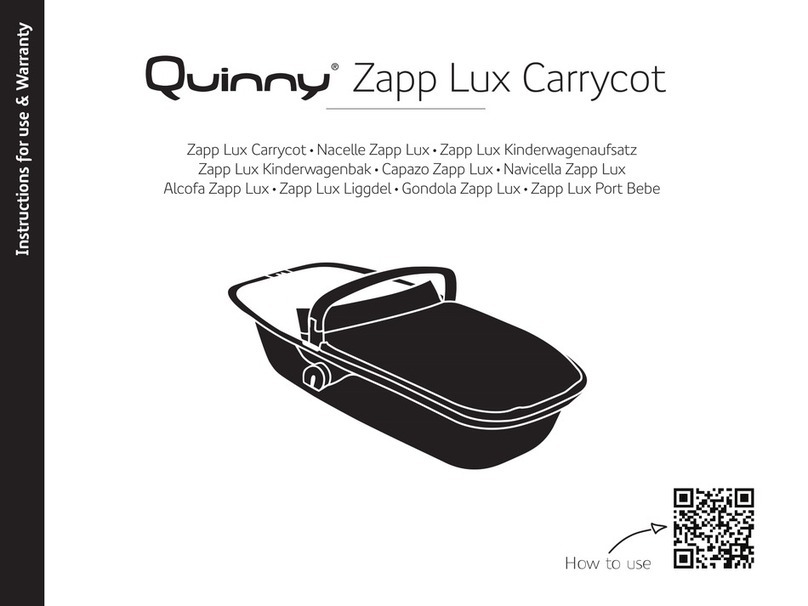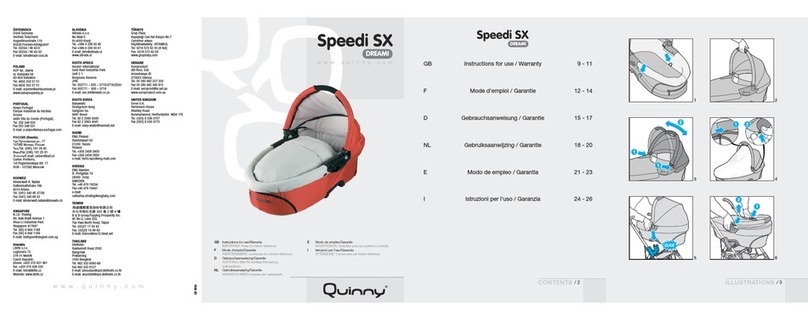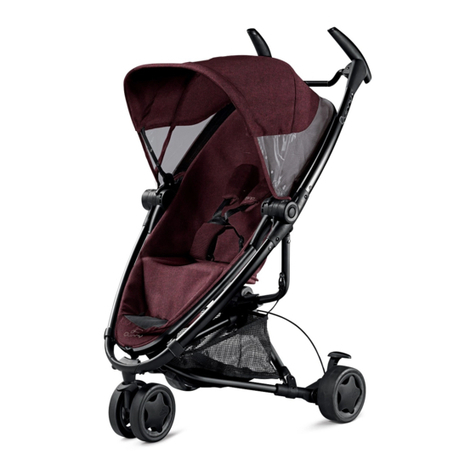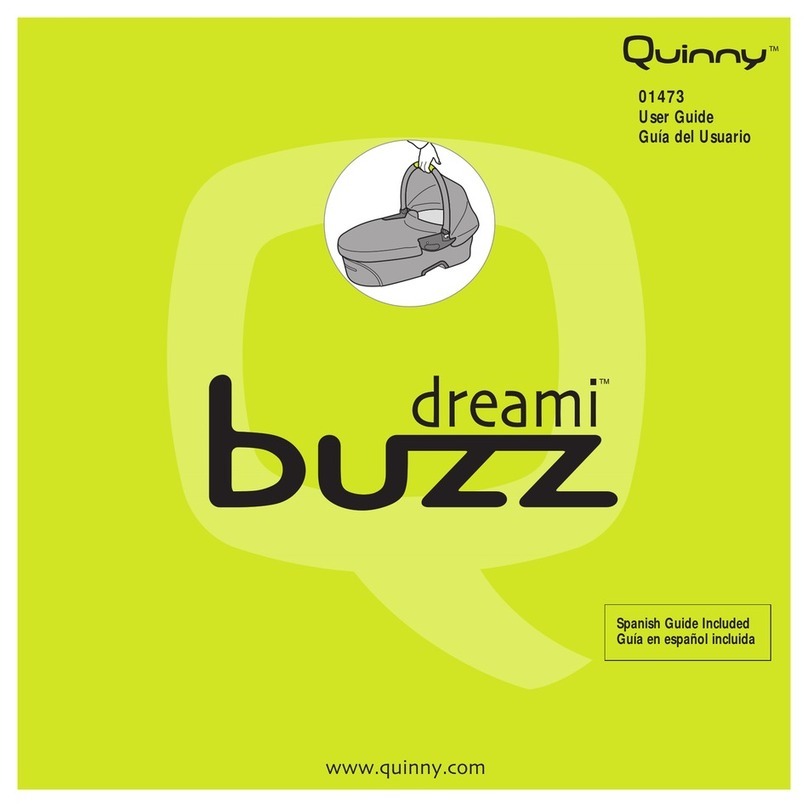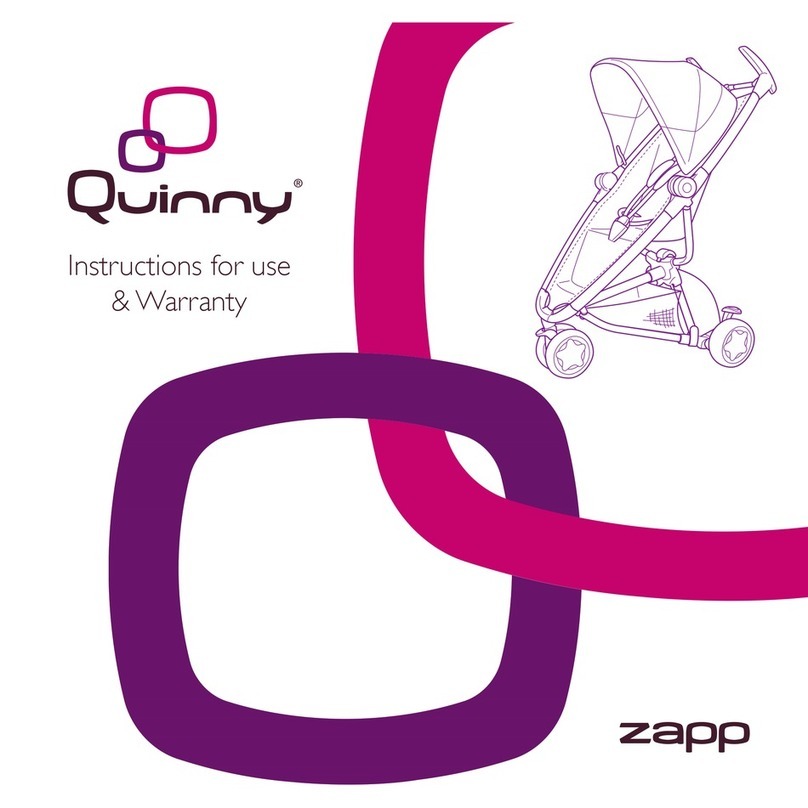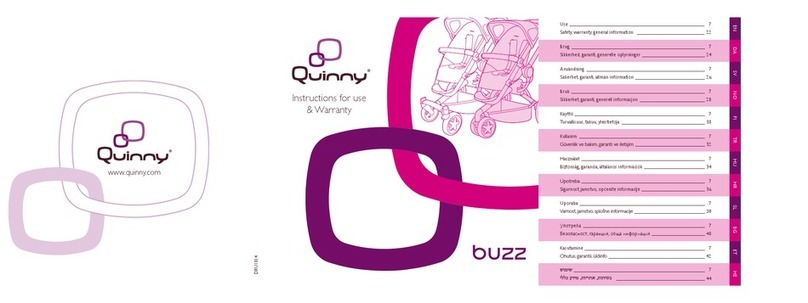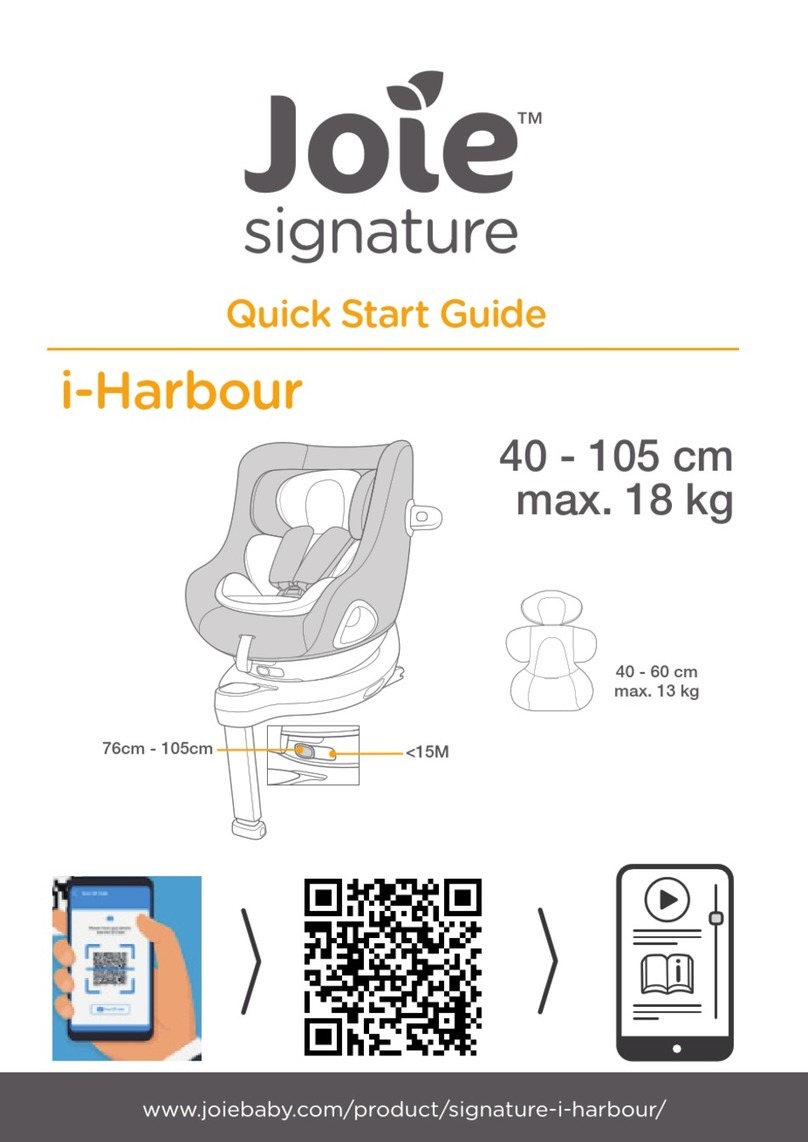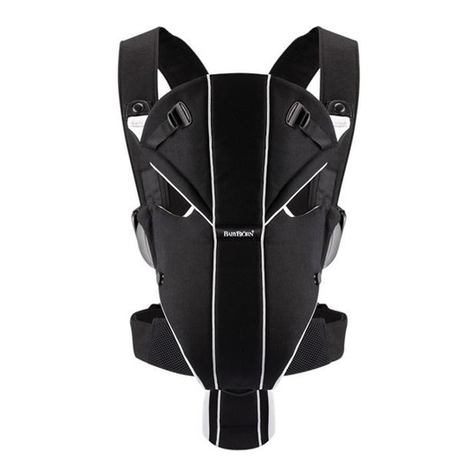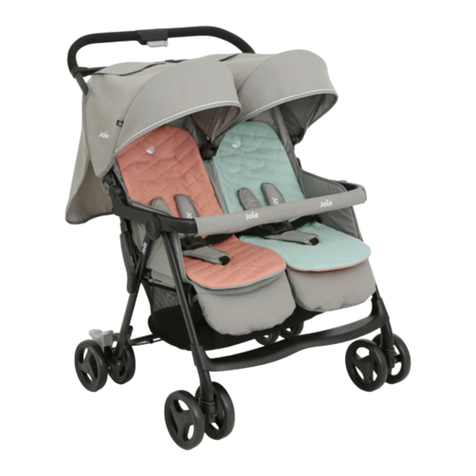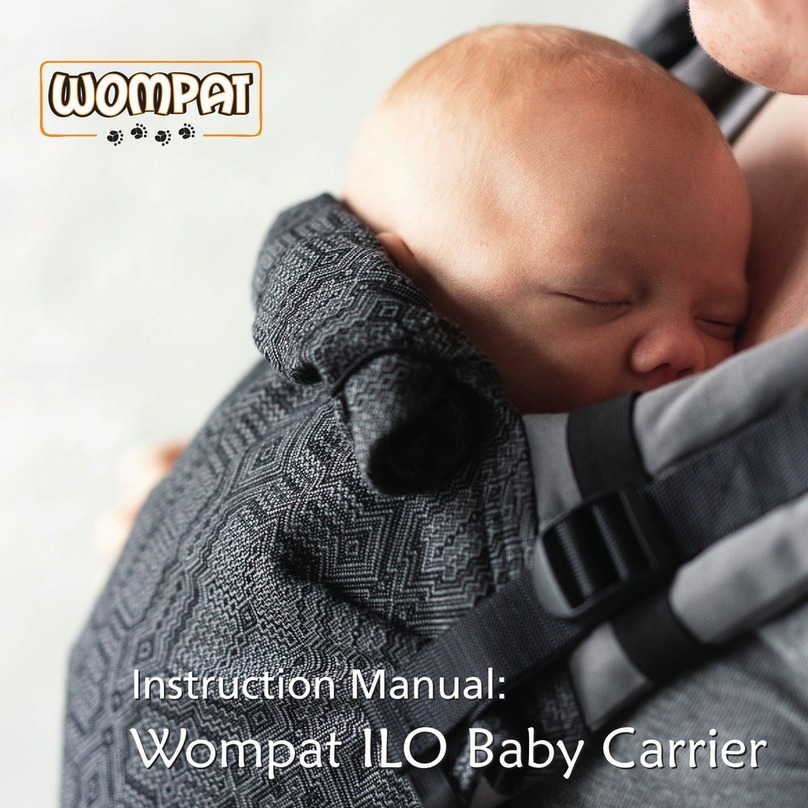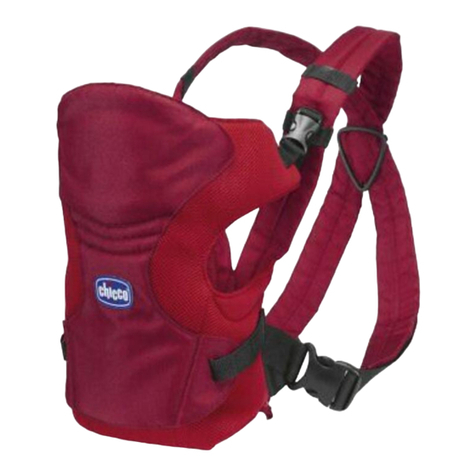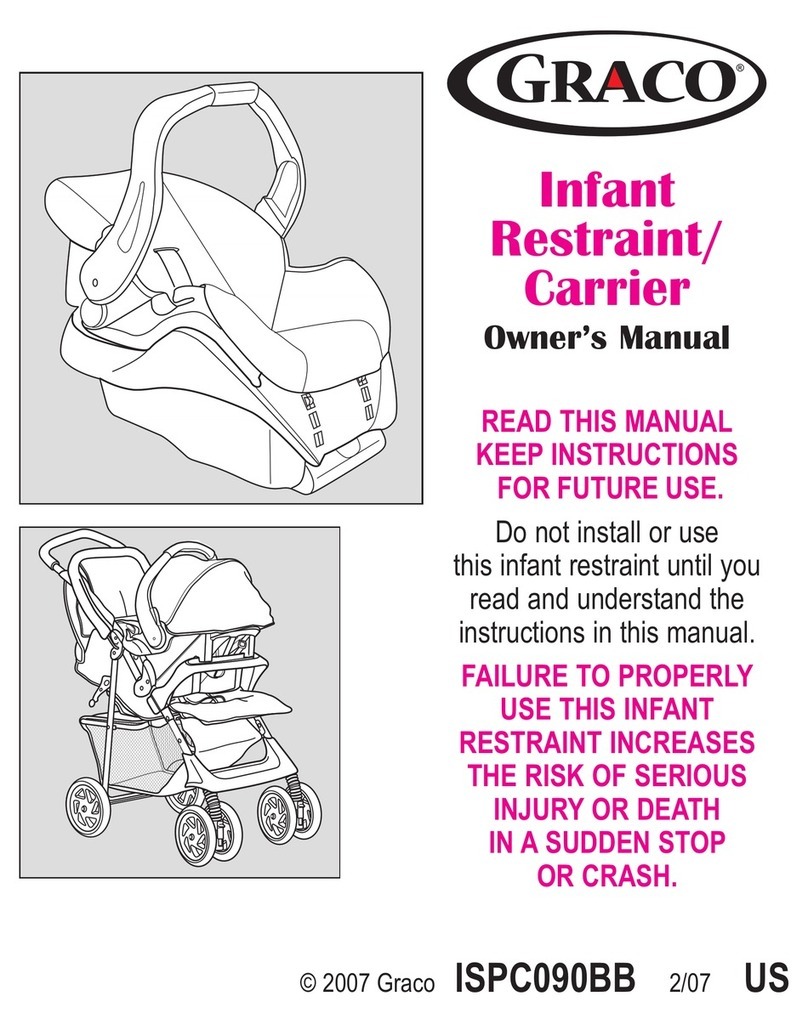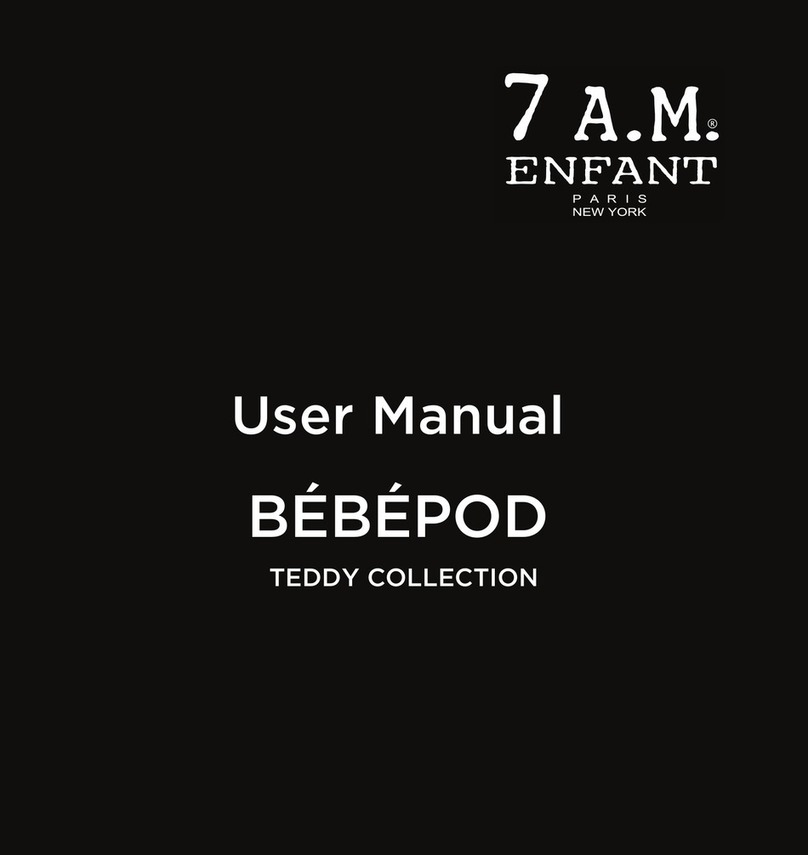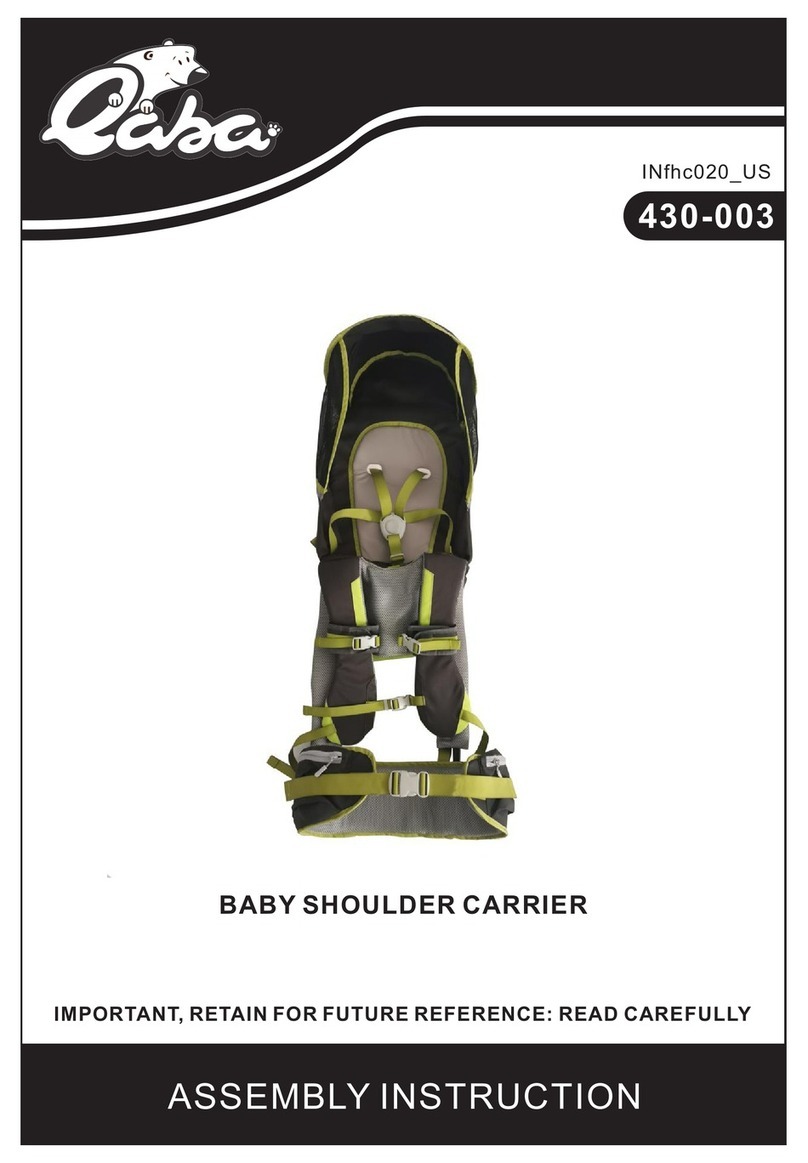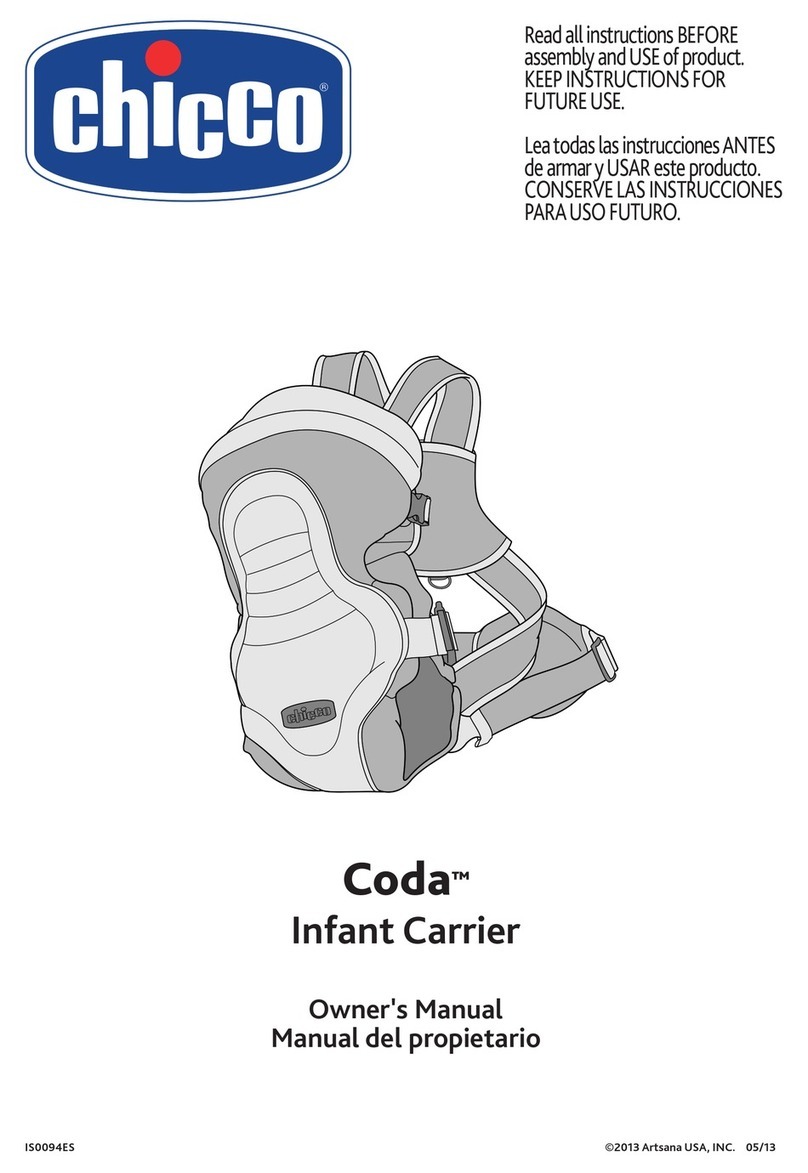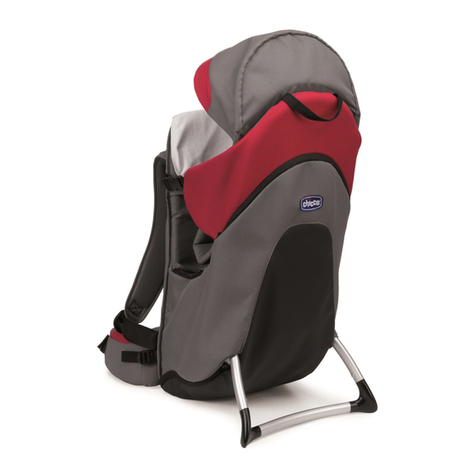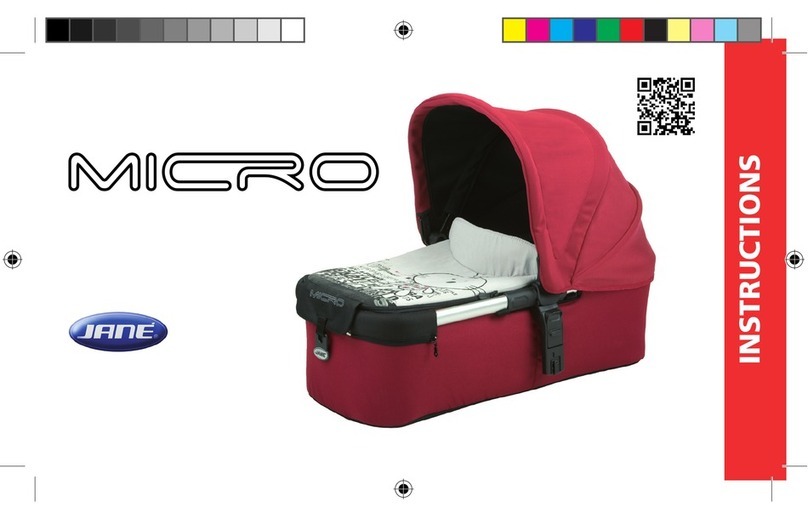•SMALL CHILDREN CAN FALL THROUGH A LEG OPENING. FOLLOW INSTRUCTIONS FOR USE.
•Only use this carrier for children between 8-LBS (3.6-kg) and 20-LBS (9.1-kg).
•CHILD ALWAYS MUST FACE TOWARDS YOU.
•Keep instructions for future use.
•Read all instructions before assembling and using the soft carrier.
•Check to assure all buckles, snaps, straps, and adjustments are secure before each use.
•Proper placement of child in product including leg placement.
•When placing a baby in the carrier, the baby’s right and left leg should extend through the bottom leg
openings.
•For proper placement, the baby’s head should rest on the adult’s shoulder.
•DO NOT place a baby into the carrier before the carrier is properly positioned and secured to the care-
giver.
•DO NOT wear this carrier near an open flame or while participating in an activity that could potentially
injure a baby.
•DO NOT lean over with straight legs as that may cause a baby to fall from the carrier.Crouching or
leaning with bent knees will help keep baby secure.
•The carrier should only be used to carryababy on your hip. NEVER use the carrier to carry a baby on
your back or in front of you.
•Carriers are meant to be used while walking or standing. NEVER wear a carrier while engaged in
fast-paced or rigorous activity such as running, biking, jogging, or operating a motorized vehicle.
•DO NOT place a baby in a carrier that is not being worn, or leave a baby unattended in a loose carrier.
•If baby should fall asleep in the carrier, turn baby’s head to the side. This will ensure that the baby can
breathe easily. Always keep some distance between the baby’s face and the adult’s body to ensure
easy breathing.
•To avoid the possibility of baby being pinched, make sure that their skin, fingers, etc. are out of the
way when snapping or locking the buckles.
•The correct fitting of the adjustment straps is vital for the safety of your child. For this also see the
label on the inside of the carrier strap.
•DO NOT wear carrier if you are pregnant.
WARNING – FALL HAZARD
1


